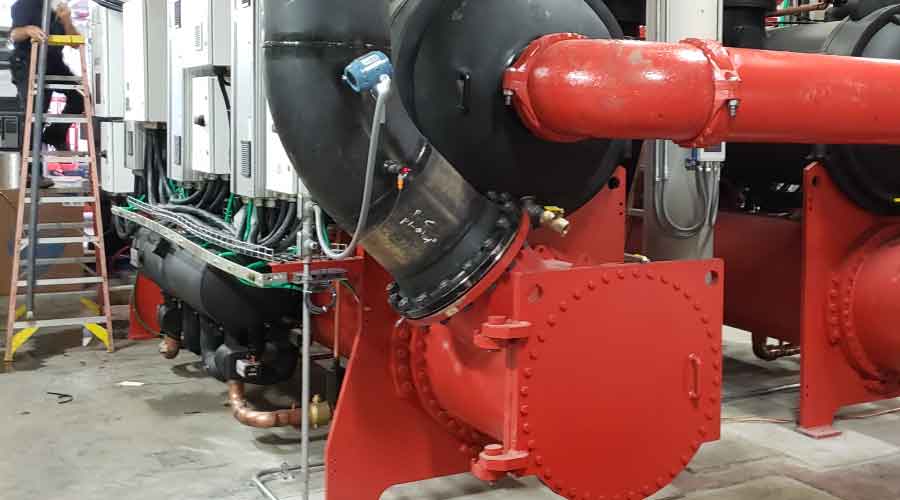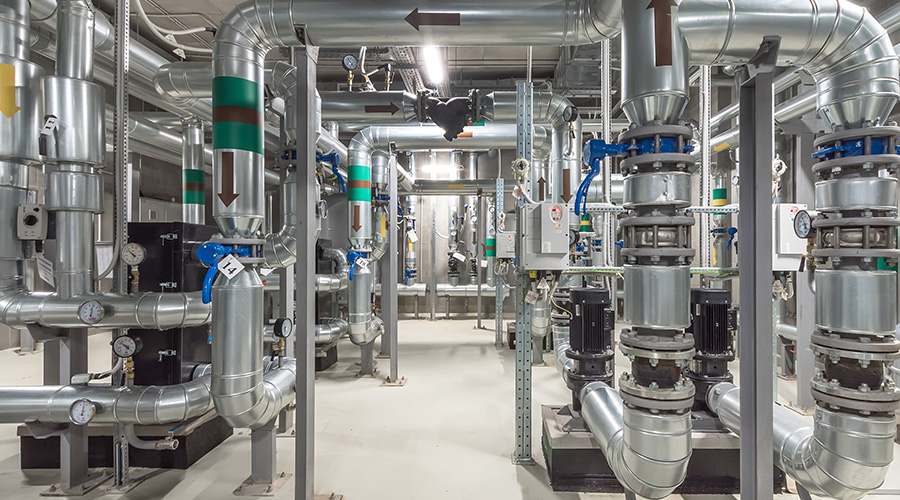 University of Cincinnati/Danfoss;
University of Cincinnati/Danfoss;University of Cincinnati Races to Update Chillers
Chiller modernization program helps University of Cincinnati generate thousands in savings
Not long after the University of Cincinnati hired Mike Hofmann, he was reminded of the importance of his position.
Hofmann became the university’s director of utilities in 2016. The university has two central utility plants — one on the east side of the uptown Cincinnati campus and another on its west side — that supply power to more than 80 buildings, including six hospitals, only one of which is part of the university. The other five hospitals are private entities that nonetheless rely on the utility plants for their power.
With so many critical entities relying on the plants, it is paramount to keep plant production equipment, including chillers, up and running reliably.
“It was described a potential life-and-death scenario, and it took me three days on the job before realizing it,” Hofmann says.
Hoffman was a longtime employee of power provider Duke Energy before coming to the university, so he knew the importance of keeping the university’s chillers running. Not long after he was hired, Hofmann embarked on a project to keep the university’s chillers operating efficiently well into the next decade and beyond.
Out with the old
The University of Cincinnati is a public research university located on a 200-acre campus that hosts more than 47,000 students and 12,000 employees. As with many school districts and higher education facilities, the university was facing the challenge of replacing numerous chillers that were nearing the end of their operational lives. The responsibility of providing power to the six hospitals added to the significance of keeping the equipment operating reliably and efficiently.
“We had our large, 5,200-ton chiller fail; it pretty much imploded,” Hofmann says. “Refrigerant mixed with some oil inside of the piece of equipment and created a highly acidic solution, which just melted down our copper tubing. Taking a 5,000-ton plus unit out of our supply was not a good way to begin the summer.”
The chiller breakdown was further complicated by a looming deadline. If additional production capacity was not installed, the result could be skyrocketing energy costs. The university is subject to an annual summer electric distribution ratchet tariff from June 1 through Sept. 30 annually, which amounts to a surcharge that could increase energy costs. The pending fee is levied by the local distribution company and approved by the public utilities commission, which will impose financial penalties for energy imports from the grid. The tariff encourages large-scale users such as the university to reduce energy use during this time.
The university worked with the Smardt Chiller Group and Danfoss to install three 2,400-ton oil-free, magnetic-bearing centrifugal chillers designed to increase production output and reduce energy use and cost, maintenance costs and chiller downtime.
The race was on to beat the June 1 deadline. The chiller arrived onsite on May 29, 2019. It was operational by June 1 and started distributing chilled water to the campus and the hospitals and research centers served by the utility plants.
Dave Lubach is managing editor for the facilities market. He has seven years of experience covering facilities management and maintenance.
Related Topics:













